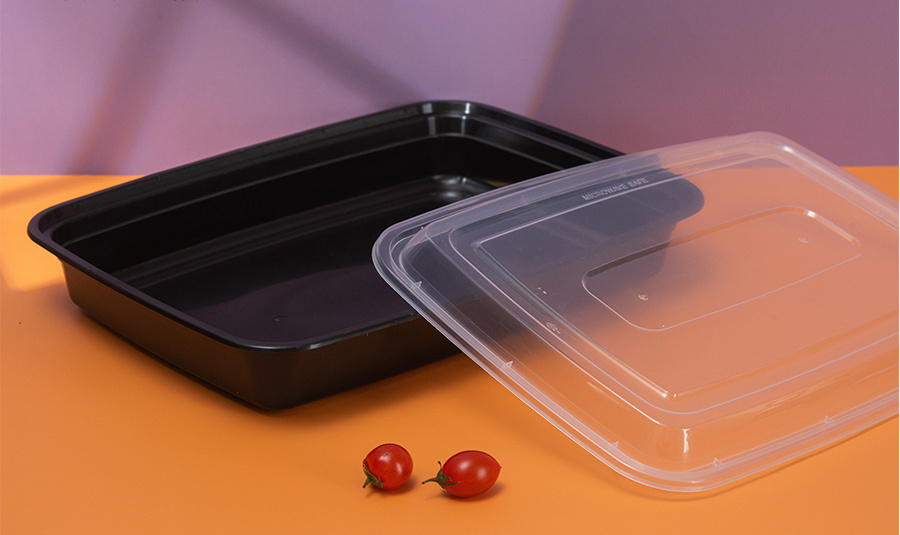The Growing Demand for the Disposable Lunch Box in Modern Food Service
Release Time:
2025-08-06
In the fast-paced world of modern food service, convenience, hygiene, and sustainability have become top priorities for businesses and consumers alike. Among the many innovations that support these needs, the disposable lunch box stands out as one of the most essential tools for food packaging and delivery. Whether it's a takeaway meal from a local restaurant, a pre-packed lunch from a convenience store, or a catering service for corporate events, the disposable lunch box plays a crucial role in ensuring that food is transported safely, remains fresh, and is served in a clean and efficient manner.
The rise of food delivery platforms and mobile ordering apps has significantly increased the consumption of disposable lunch boxes. With millions of meals being delivered daily across cities worldwide, the demand for reliable, lightweight, and cost-effective food containers has never been higher. Disposable lunch boxes meet these requirements perfectly, offering a practical solution for restaurants, cafes, and delivery kitchens that need to pack and transport meals quickly and securely.
Traditionally, disposable lunch boxes were made from plastic due to its durability and low cost. However, growing environmental awareness and regulations against single-use plastics have shifted the industry toward more sustainable alternatives. Today, disposable lunch boxes are available in a wide range of materials including paper, kraft board, sugarcane bagasse, cornstarch, and biodegradable plastics. These eco-friendly options allow food businesses to minimize their environmental footprint while still maintaining the convenience of disposability.
The design of a disposable lunch box is also an important factor. Many of them feature compartments that allow for the separation of different food items, preserving flavors and textures during transport. Leak-proof lids, heat insulation properties, and microwave-safe materials are often incorporated to enhance user experience. These features make the disposable lunch box not only functional but also appealing to a wide variety of consumers—from busy professionals grabbing a quick lunch to families ordering dinner at home.
Hygiene has always been a critical concern in the food industry, and the importance of sanitary packaging has become even more apparent in the wake of global health crises. The disposable lunch box offers a single-use solution that reduces the risk of contamination, reassuring customers that their meals are handled safely. For catering businesses, disposable containers also simplify logistics, eliminating the need for cleaning and returns, and ensuring that large-scale meal distributions can be managed efficiently.
Branding is another key aspect of modern packaging, and disposable lunch boxes offer valuable real estate for marketing messages. Many companies now customize their lunch boxes with logos, slogans, QR codes, and social media handles, turning every meal into a promotional opportunity. This not only boosts brand visibility but also creates a more professional and cohesive image for the business.

In addition to restaurants and caterers, the use of disposable lunch boxes is expanding into schools, hospitals, airlines, and event venues. Institutions are recognizing the benefits of pre-packaged meals for operational efficiency, portion control, and waste reduction. Whether used for hospital patients, airline passengers, or schoolchildren, these containers provide a consistent and reliable means of serving meals without compromising on quality or safety.
Despite their benefits, there are challenges associated with disposable lunch boxes, particularly in managing waste and encouraging recycling or composting. To address these concerns, governments and manufacturers are working together to improve labeling, provide disposal instructions, and develop materials that decompose more easily. Some cities have even launched incentives for businesses that switch to compostable or recyclable packaging.
Innovation continues to drive the evolution of disposable food packaging. From smart materials that change color to indicate freshness, to modular designs that can be used for multiple meal types, the disposable lunch box is becoming more advanced and versatile. As consumer expectations evolve, packaging will continue to play a central role in shaping the food service experience.
In conclusion, the disposable lunch box is far more than just a container—it's a vital part of the global food delivery ecosystem. Its ability to combine practicality, hygiene, branding potential, and sustainability makes it an indispensable tool in today’s food industry. As trends continue to favor convenience and eco-conscious choices, disposable lunch boxes will remain a cornerstone of modern meal packaging for years to come.
Related News

